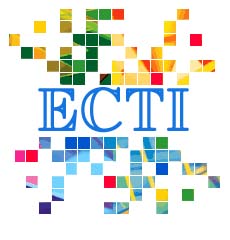Improved Performance Upper Bounds for Terminated Convolutional Codes in Rayleigh Fading Channels
Main Article Content
Abstract
This paper presents improved performance upper bounds for terminated convolutional codes over Rayleigh fading channels with BPSK and QPSK modulation. The conventional union bound derived from the transfer function becomes loose when the convolutional code is terminated by a ¯nite-length information sequence followed by additional tail bits. We use the modi¯ed trellis approach to derive tighter upper bounds for terminated convolutional codes combined with BPSK modulation over Rayleigh fading channels. Furthermore, we derive the weight enumerators for rate-1=2 terminated convolutional codes with QPSK modulation and present tighter upper bounds over Rayleigh fading channels.
Article Details
This journal provides immediate open access to its content on the principle that making research freely available to the public supports a greater global exchange of knowledge.
- Creative Commons Copyright License
The journal allows readers to download and share all published articles as long as they properly cite such articles; however, they cannot change them or use them commercially. This is classified as CC BY-NC-ND for the creative commons license.
- Retention of Copyright and Publishing Rights
The journal allows the authors of the published articles to hold copyrights and publishing rights without restrictions.
References
[2] H. Moon and D. C. Cox, "Improved Performance Upper Bounds for Terminated Convolutional Codes," Communications Letters, IEEE, vol. 11, no. 6, pp. 519-521, June 2007.
[3] -, "Generalized Performance Upper Bounds for Terminated Convolutional Codes," IEICE Transactions on Communications, vol. E90-B, no. 6, pp. 1360-1366, 2007.
[4] K. Fagervik and T. G. Jeans, "Low Complexity Bit by Bit Soft Output Demodulator," Electronics Letters, vol. 32, no. 11, pp. 985-987, May 1996.
[5] G. D. Forney, "The Viterbi Algorithm," Proceedings of the IEEE, vol. 61, no. 3, pp. 268-278, March 1973.
[6] J. Modestino and S. Mui, "Convolutional Code Performance in the Rician Fading Channel," IEEE Transactions on Communications, vol. 24, no. 6, pp. 592-606, Jun 1976.
[7] Y. L. Chen and C. H.Wei, "Performance Bounds of Rate 1=2 Convolutional Codes with QPSK on Rayleigh Fading Channel," Electronics Letters, vol. 22, no. 17, pp. 915-917, 1986.
[8] -, "On the Performance of Rate 1=2 Convolutional Codes with QPSK on Rician Fading Channels," Vehicular Technology, IEEE Transactions on, vol. 39, no. 2, pp. 161-170, May 1990.
[9] M. K. Simon and M. S. Alouini, Digital Communication over Fading Channels: A Unified Approach to Performance Analysis. New York: Wiley, 2000


